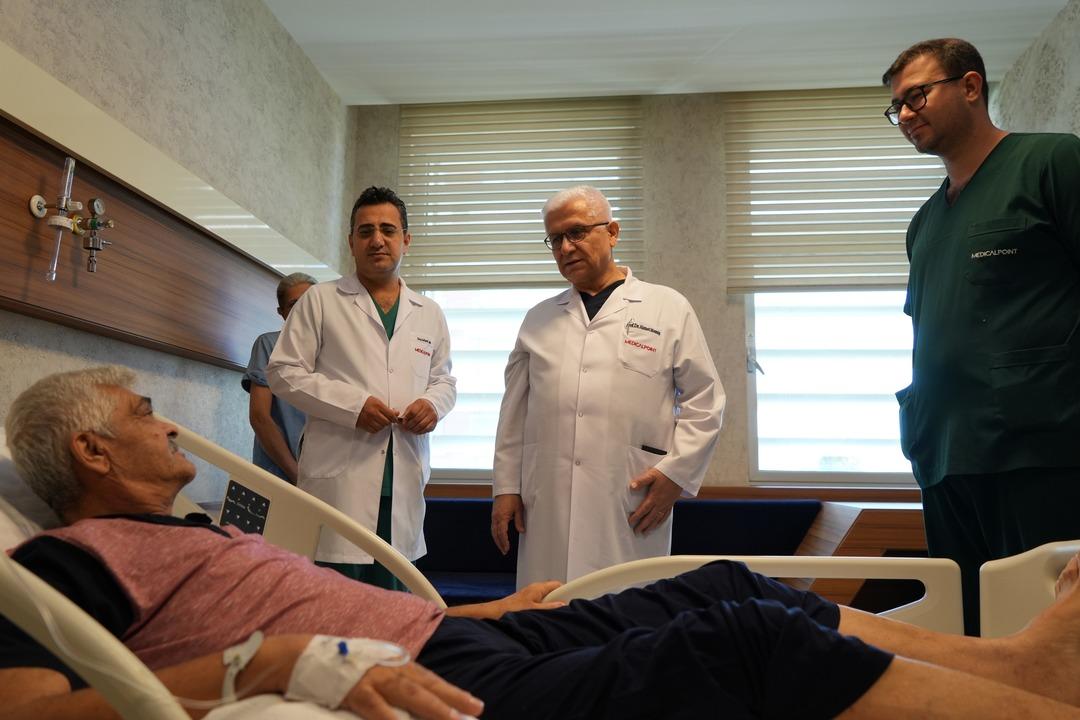He recovered with a rare treatment method: "They said I had 6 months left to live"

Ömer Özkan, a 64-year-old resident of Izmir, faced a serious, silent complication following his living donor liver transplant in 2019. Years after the transplant, a bile duct obstruction developed, becoming life-threatening. However, thanks to an innovative procedure performed in a small number of centers in Turkey, Özkan was able to regain his life through successful surgery.

Interventional Radiology Specialist Prof. Dr. Ahmet Memiş stated that Ömer Özkan was a truly challenging patient, saying, "He was a serious and complex patient, posing a life-threatening threat. Knowing that such a difficult patient could not be treated with conventional methods, a completely different approach was employed. A hybrid approach was chosen, combining both endoscopic and interventional percutaneous procedures using magnets, a technique only available in a few advanced centers worldwide. All materials used in this patient were microtechnology materials. Thanks to these microtechnology materials, our colleagues achieved great success with a very challenging patient. Our greatest dream is to be able to use nanotechnology nanorobots in advanced cell surgery in the near future. This treatment we are performing today is one of the most important and significant steps taken on the path to this dream."

Gastroenterology specialist Assoc. Prof. Dr. stated that Ömer Özkan applied to them due to complaints of jaundice and itching. Ferit Çelik said, "Our patient was a living donor liver transplant case in 2019. In our evaluation, we saw that the integrity between the patient's own bile duct and the transplanted liver could not be achieved. In living donor liver transplant cases, such problems, called anastomotic stenosis, are seen at a rate of approximately 20 percent worldwide, meaning one in every five cases. Therefore, a connection (anastomosis) had to be made between the bile duct and the small intestine. Alternatively, the magnet method, which is applied in a limited number of centers worldwide, could have been used. We chose this method and placed a magnet in the stenosis area. At the end of the 48th hour, we observed that the magnets had stuck to each other. The magnets had combined in the bile ducts, creating a hole in that area. We saw that bile flow gradually started with this procedure. We then took the patient to the procedure again together with the interventional radiology unit. The implanted magnets were removed using the 'frontal' method. Then, the stenosis area was widened by interventional radiology and us, and three stents were placed in this area. As a result, our patient's bile duct “We have restored the integrity of the road,” he said.
IT IS APPLIED IN VERY FEW CENTERS IN THE WORLDRadiology Specialist Dr. Kamil Doğan stated that the magnet method used on Ömer Özkan is a procedure performed in a few centers in Türkiye and very few centers worldwide. He added, "In such cases, we simultaneously applied the magnetic compression method, rarely used worldwide, with our Professor Ferit. Our goal here was to connect the section of the bile ducts that lacks a connection to the bile ducts using the pulling force of both magnets. After applying this method, the bile ducts were connected within approximately two weeks. Then, again by joint appointment and in a joint operation, we successfully placed a stent in the area where we had connected them. This saved our patient from losing his liver. We are very pleased to have achieved success using minimally invasive methods, leaving no scars, bruises, or incisions. We successfully perform this and many similar procedures at our hospital, both in interventional radiology and in collaboration with other disciplines."

Ömer Özkan, who regained his health with the successful surgery, said, "Two or three years ago, my liver values were deteriorating, but this condition lasted about a month before my values improved again. When I went to the hospital for the second time in March 2025, my doctor confirmed with an ultrasound that my liver and bile ducts were blocked. A CT scan was performed immediately afterward. It was reported that there was a near-complete stenosis in my bile ducts, bile was not being excreted, and my liver values were increasing daily. However, I accepted the risk. My doctors took this risk and, using all their expertise, knowledge, and skills, brought me back to life today with three operations. They said, "If those procedures hadn't been performed, I might have only had six months to live. They brought me to this point, and I am grateful to them all."
(İHA) This content was published by Sedef Karatay
mynet





